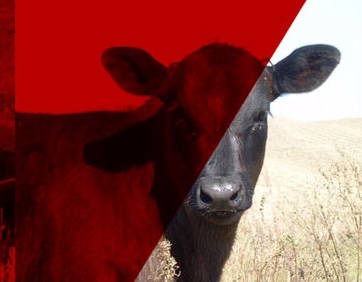After several years of dry conditions limiting fall pasture growth in cool season pastures, this year may look a little different. Moisture and moderate temperatures are setting up the potential for some extra grass growth heading into the fall. While it’s tempting to use this forage right away, taking time to think through fall grazing strategies can pay dividends for both short-term feed needs and long-term pasture health.
Stockpiling Opportunities
One option is to let pastures rest this fall and stockpile growth for later grazing. Cool-season grasses like smooth bromegrass, Kentucky bluegrass, and fescue often respond well to cooler fall conditions, if moisture is present.
Stockpiling can provide high-quality forage for late fall or even winter grazing, reducing the need for harvested feeds. Fertilizing earlier in the season and allowing pastures to rest now sets up the best stockpiling response, but even without those steps, deferring grazing can build feed reserves. Research at the University of Wisconsin has shown that cool-season grass stockpiled with 40–60 lb N/acre can produce nearly a 75% increase in forage over unfertilized fields, depending on rainfall.
Fall Fertilization
Fertility is another tool to consider in the fall. Applying nitrogen in late August through early September can boost fall growth and improve stockpiling potential. While we are now on the back end of the ideal window, some benefit can still be seen if moisture is available to move nutrients into the soil profile. Beyond immediate growth, fall-applied fertilizer can also enhance early spring vigor by ensuring adequate nutrient availability as plants break dormancy.
However, nitrogen isn’t the only nutrient to keep in mind. Phosphorus and potassium applications are also worth considering. These nutrients don’t produce the same rapid flush of growth as nitrogen but play a critical role in stand persistence, root development, and winter hardiness. Fall can be a good time to correct deficiencies since soil tests taken after summer growth provide a clearer picture of nutrient status, and applications can be made ahead of next year’s needs. As a rule of thumb, aim to maintain soil test phosphorus above 15 ppm (Bray) and potassium above 120 ppm for cool-season grasses. Alfalfa and mixed stands may require higher levels.
On native range or warm-season species, however, fall fertilization is not recommended since these plants are headed toward dormancy and won’t respond with additional growth.
Weighing Trade-Offs: Forage Now vs. Forage Later
The key question for many producers is whether to use the extra growth this fall or leave it for later. Grazing now can relieve pressure on other feed sources, but it comes with trade-offs. Grass plants need time in the fall to rebuild root reserves and set buds for spring growth. Over-utilization in September or October can weaken stands and reduce vigor next year.
Think back to this past spring. With slow green-up and delayed growth, early grazing pressure often left pastures short well into the season. Heavy use this fall could set us up for a repeat scenario. Leaving enough leaf area for photosynthesis and recovery heading into dormancy is critical to avoid slowing spring growth. A practical rule: if plants have less than 4 weeks of good growing conditions left after a grazing event, the chances of full recovery before dormancy are low.
Strategic Approaches
- Rotate, don’t concentrate. If you choose to graze this fall, rotate quickly to avoid overgrazing any one area.
- Watch residuals. Leave at least 4 inches of stubble on cool-season grasses to maintain plant health. For native range, leaving 6–8 inches is a safer target.
- Target less sensitive acres. Native warm-season rangeland doesn’t respond as strongly to fall rest, but it also won’t provide much regrowth. Use caution if grazing these areas and avoid heavy pressure.
- Plan for next spring. Pastures rested this fall will often be the first and most productive next spring. Factor this into your grazing plan.
- If you’re leasing or custom grazing, discuss fall use and fertility decisions with the landowner to avoid conflicts over spring performance and/or conflicts with the current lease terms.
Bottom Line
This fall may offer a rare chance for some extra pasture growth. Using it wisely can either fill feed gaps now or set up strong forage supplies for the months ahead. The right choice depends on your operation’s forage needs, but keeping long-term recovery in mind is key. Fertility, rest, and careful use of available forage all play a role. Including cost-checks on fertilizer ROI and monitoring residual heights can help producers decide which strategy fits best. A little restraint today can mean more grass tomorrow.
Article by Ben Beckman, Nebraska Extension Livestock Educator.

